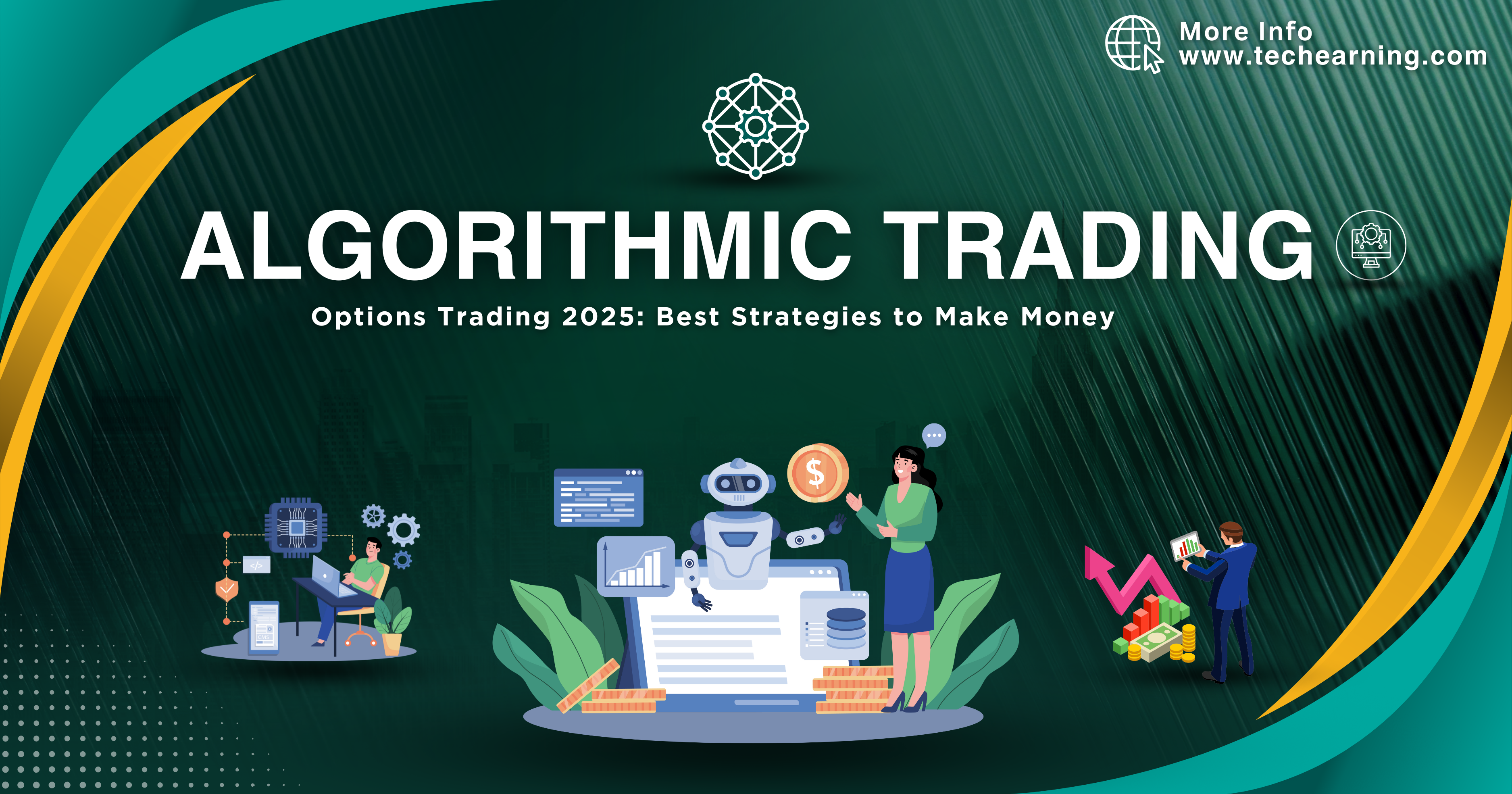
Top 5 Reasons Why Algorithmic Trading Can Skyrocket Your Profits
Introduction
Algorithmic Trading, also known as Algo Trading or Automated Trading, is revolutionizing financial markets. It involves using computer programs to execute trades at lightning speed based on pre-set conditions. Whether you’re a beginner or an experienced trader, understanding Algorithmic Trading can significantly enhance your investment strategies.
What is Algorithmic Trading ?
Algorithmic Trading is a method of executing trades using computer algorithms that follow specific instructions. These algorithms analyze market data, identify profitable opportunities, and execute trades without human intervention. The goal is to enhance efficiency, reduce errors, and optimize trade execution speed.
Why is Algorithmic Trading Important ?
- Speed & Efficiency – Algo Trading executes trades faster than any human trader.
- Eliminates Emotional Trading – Decisions are based on logic and pre-defined strategies.
- Backtesting – Algorithms can be tested on historical data before applying them live.
- Lower Transaction Costs – Reduced human involvement minimizes commission and impact costs.
- Improved Market Liquidity – Algorithms help maintain price stability and liquidity.
- 24/7 Market Monitoring – Unlike human traders, algorithms can analyze markets continuously.
How Algorithmic Trading Works
Algo Trading System uses mathematical models and statistical analysis to scan the market for profitable opportunities. The steps involved include:
- Data Collection – Gathering real-time and historical market data.
- Strategy Development – Creating trading rules based on technical indicators.
- Backtesting – Testing strategies using past data to determine effectiveness.
- Execution – Deploying the algorithm to execute trades automatically.
Key Components of Algorithmic Trading
- Trading Strategy – Defines buy/sell conditions.
- Programming Language – Python, C++, R, or Java.
- Execution System – Connects with brokers for order placement.
- Risk Management – Stop-loss, position sizing, and capital allocation.
- Market Data Feeds – Real-time and historical data sources for strategy optimization.
Types of Algorithmic Trading Strategies
- Trend-Following Strategies – Uses moving averages, momentum indicators, and breakout strategies.
- Arbitrage Opportunities – Exploits price differences between markets.
- Market Making – Provides liquidity by placing buy/sell orders.
- Mean Reversion – Identifies assets that deviate from historical price trends.
- High-Frequency Trading (HFT) – Executes thousands of trades in milliseconds.
- Machine Learning-Based Strategies – Uses AI and ML models to predict price movements.
Tools & Platforms for Algorithmic Trading
- MetaTrader 4 & 5 (MT4/MT5)
- NinjaTrader
- QuantConnect
- TradeStation
- Python Libraries (Pandas, NumPy, Scikit-Learn)
- Interactive Brokers API – A widely used trading API.
- AlgoTrader – A professional Algo Trading System software.
Challenges & Risks of Algorithmic Trading
- Technical Failures – Software bugs or connectivity issues.
- Overfitting – Strategies that work in the past may not work in the future.
- Regulatory Concerns – Compliance with financial laws and regulations.
- High Competition – Large hedge funds and institutions dominate the market.
- Latency Issues – Delays in order execution can impact profitability.
- Security Risks – Algorithmic trading systems can be vulnerable to cyber-attacks.
How to Get Started with Algorithmic Trading ?
- Learn the Basics – Understand financial markets and trading strategies.
- Choose a Programming Language – Python is beginner-friendly.
- Develop a Simple Strategy – Start with a basic moving average crossover.
- Backtest Your Strategy – Use historical data to test performance.
- Use a Trading Platform – Connect with a broker to execute trades.
- Monitor & Optimize – Continuously improve your algorithm.
- Stay Updated – Follow market trends, regulatory updates, and new trading techniques.
Future of Algorithmic Trading
Algorithmic Trading is expected to grow exponentially in the coming years. With advancements in artificial intelligence, big data analytics, and blockchain technology, trading algorithms are becoming more sophisticated. Some future trends include:
- AI-Driven Trading Bots – Smart algorithms that learn from market patterns.
- Quantum Computing in Trading – Ultra-fast computing to analyze complex data sets.
- Decentralized Finance (DeFi) Algorithms – AI-driven strategies for cryptocurrency trading.
- Automated Portfolio Management – AI-based investment and risk management tools.
Conclusion
Algorithmic Trading is a game-changer for traders who want to leverage technology for maximum efficiency and profitability. With the right knowledge, tools, and strategy, anyone can enter the world of automated trading and achieve financial success. By understanding the fundamentals, testing strategies, and continuously optimizing them, traders can stay ahead in the competitive financial markets.
For more insights on trading and digital marketing, visit our Home Page.